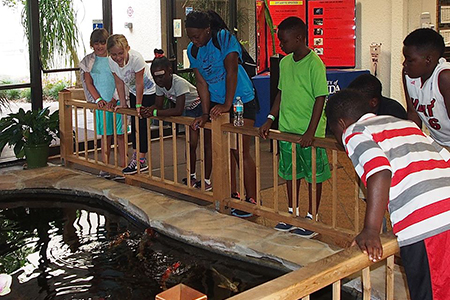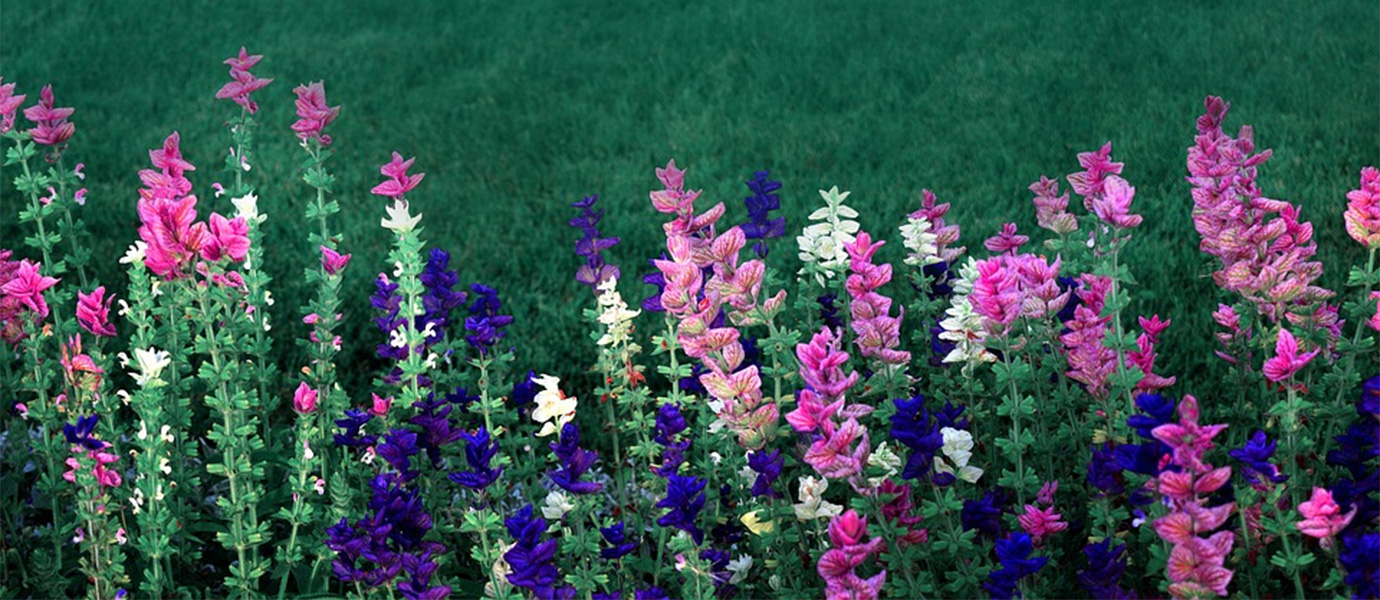
Florida Botanical Gardens
Groups can stroll through the intimate and delightfully scented herb garden, stand amongst the towering trunks of banana and plantain trees in the tropical fruit garden, view the collection of Florida native plants mingling in colorful harmony, admire beautiful and strange succulents from all around the world, visit with lovely butterflies, learn about the palms that help keep the world’s economies running and much more. Participate in annual events like pumpkin festivals and holiday lights in the gardens.
supports classroom learning in:
Science.
topics covered:
Biology, Ecology, Gardening, Natural History, Plants, Pollination.
contact info
Phone: 727-582-2100
INFO
ABOUT
Florida Botanical Gardens
The Florida Botanical Gardens is an urban oasis, inspiring and educating visitors through its showcase of flora, fauna and natural resources. The Gardens strive to promote environmentally friendly techniques. Spend the day at the Gardens -- open almost every day of the year with free admission!
contact info
Hrs: Daily 7AM - 5PM.
HELPFUL LESSON PLAN(S)
Prepared by FieldTripDirectory.com
Botanical Garden Lesson Plan
FUN FACTS
The diverse world of plants is perhaps the weirdest, and most fascinating, of all living things. Bamboo can grow over three feet in one day (you can literally watch it grow). There are 600 species of carnivorous plants, which trap and digest insects, frogs, or small birds (if a vegetarian eats this plant, are they still a vegetarian?). The world’s largest flower, Rafflesia, can grow up to three feet in diameter (how big would a bouquet be…). Do a little digging on your next trip to a botanical garden (not literally!), and see what interesting plant facts you can find.
View Lesson Plan>>
Florida Botanical Gardens
Groups can stroll through the intimate and delightfully scented herb garden, stand amongst the towering trunks of banana and plantain trees in the tropical fruit garden, view the collection of Florida native plants mingling in colorful harmony, admire beautiful and strange succulents from all around the world, visit with lovely butterflies, learn about the palms that help keep the world’s economies running and much more. Participate in annual events like pumpkin festivals and holiday lights in the gardens.
supports scout badges in:
Science.
topics covered:
Biology, Ecology, Gardening, Natural History, Plants, Pollination.
contact info
Phone: 727-582-2100
INFO
ABOUT
Florida Botanical Gardens
The Florida Botanical Gardens is an urban oasis, inspiring and educating visitors through its showcase of flora, fauna and natural resources. The Gardens strive to promote environmentally friendly techniques. Spend the day at the Gardens -- open almost every day of the year with free admission!
contact info
Hrs: Daily 7AM - 5PM.
HELPFUL LESSON PLAN(S)
Prepared by FieldTripDirectory.com
Botanical Garden Lesson Plan
FUN FACTS
The diverse world of plants is perhaps the weirdest, and most fascinating, of all living things. Bamboo can grow over three feet in one day (you can literally watch it grow). There are 600 species of carnivorous plants, which trap and digest insects, frogs, or small birds (if a vegetarian eats this plant, are they still a vegetarian?). The world’s largest flower, Rafflesia, can grow up to three feet in diameter (how big would a bouquet be…). Do a little digging on your next trip to a botanical garden (not literally!), and see what interesting plant facts you can find.
View Lesson Plan>>
Florida Botanical Gardens
Groups can stroll through the intimate and delightfully scented herb garden, stand amongst the towering trunks of banana and plantain trees in the tropical fruit garden, view the collection of Florida native plants mingling in colorful harmony, admire beautiful and strange succulents from all around the world, visit with lovely butterflies, learn about the palms that help keep the world’s economies running and much more. Participate in annual events like pumpkin festivals and holiday lights in the gardens.
topics covered:
Biology, Ecology, Gardening, Natural History, Plants, Pollination.
contact info
Phone: 727-582-2100
INFO
ABOUT
Florida Botanical Gardens
The Florida Botanical Gardens is an urban oasis, inspiring and educating visitors through its showcase of flora, fauna and natural resources. The Gardens strive to promote environmentally friendly techniques. Spend the day at the Gardens -- open almost every day of the year with free admission!
contact info
Hrs: Daily 7AM - 5PM.
HELPFUL LESSON PLAN(S)
Prepared by FieldTripDirectory.com
Botanical Garden Lesson Plan
FUN FACTS
The diverse world of plants is perhaps the weirdest, and most fascinating, of all living things. Bamboo can grow over three feet in one day (you can literally watch it grow). There are 600 species of carnivorous plants, which trap and digest insects, frogs, or small birds (if a vegetarian eats this plant, are they still a vegetarian?). The world’s largest flower, Rafflesia, can grow up to three feet in diameter (how big would a bouquet be…). Do a little digging on your next trip to a botanical garden (not literally!), and see what interesting plant facts you can find.
View Lesson Plan>>
Florida Botanical Gardens
Groups can stroll through the intimate and delightfully scented herb garden, stand amongst the towering trunks of banana and plantain trees in the tropical fruit garden, view the collection of Florida native plants mingling in colorful harmony, admire beautiful and strange succulents from all around the world, visit with lovely butterflies, learn about the palms that help keep the world’s economies running and much more. Participate in annual events like pumpkin festivals and holiday lights in the gardens.
supports classroom learning in:
Science.
topics covered:
Biology, Ecology, Gardening, Natural History, Plants, Pollination.
contact info
Phone: 727-582-2100
INFO
ABOUT
Florida Botanical Gardens
The Florida Botanical Gardens is an urban oasis, inspiring and educating visitors through its showcase of flora, fauna and natural resources. The Gardens strive to promote environmentally friendly techniques. Spend the day at the Gardens -- open almost every day of the year with free admission!
contact info
Hrs: Daily 7AM - 5PM.
HELPFUL LESSON PLAN(S)
Prepared by FieldTripDirectory.com
Botanical Garden Lesson Plan
FUN FACTS
The diverse world of plants is perhaps the weirdest, and most fascinating, of all living things. Bamboo can grow over three feet in one day (you can literally watch it grow). There are 600 species of carnivorous plants, which trap and digest insects, frogs, or small birds (if a vegetarian eats this plant, are they still a vegetarian?). The world’s largest flower, Rafflesia, can grow up to three feet in diameter (how big would a bouquet be…). Do a little digging on your next trip to a botanical garden (not literally!), and see what interesting plant facts you can find.
View Lesson Plan>>
